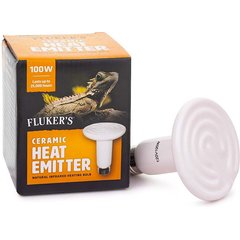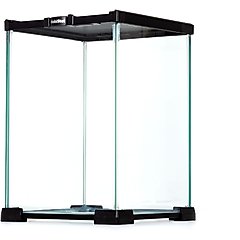My Crested Gecko’s Tail Fell Off—What Do I Do?

Photo by Kaan Sezer/iStock/Getty Images Plus
Seeing the tail fall off your crested gecko may be a little frightening, but it’s actually a natural defense mechanism. In the wild, that wiggling tail helps them quickly escape predators—leaving the tail behind while they escape.
Yet, what (if anything) should you do for your crestie if they drop their tail? Here are some practical steps to help your crested gecko heal and adjust to life without a tail.
Key Takeaways
- Crested geckos drop their tails as a defense mechanism due to stress, injury, or other health issues.
- Secure all enclosure decorations to prevent falls, which can lead to injury and possible tail loss.
- Handle your crested gecko gently so they don’t become frightened and lose their tail.
- Provide a balanced, nutrient-rich diet to help support healing after tail loss.
Why Crested Geckos Lose Their Tails
Crested geckos are one of thousands of lizard species that have evolved the ability to self-amputate their tails. Among wild crested geckos, tail loss is so common that many adults have no tail.
“Crested geckos lose their tails for multiple reasons,” says Braden Scofield, owner of Amazing Geckos in Longview, Texas. “Some drop them because they are stressed.”
Alicia Guevara of East Bay Geckos in Sacramento, California, explains that it can also happen if the animal’s husbandry, or overall care, is out of balance. “Maybe they’re feeling a little bit stressed… the humidity isn’t right, or maybe they’re not getting as many meals [as needed], or something like that.”
Crested geckos can lose their tail for a number of reasons, including:
- Stress or fear: The primary reason for tail loss is stress or fear as a threat response.
- Injury: Crested geckos climb all over and can get into odd places—either falling on, or pinching their tails, causing damage.
- Malnutrition or illness: Providing a balanced, nutritious diet for your crested gecko is crucial to their long-term health.
- Improper habitat setup: Poor heating and lighting or unstable climbing enrichment can lead to health problems and injuries.
Recommended Products
- Fights with other geckos: Male geckos can get aggressive with each other, so keeping them in separate enclosures can be safer.
When a crested gecko drops its tail, it wiggles around for two to give minutes—an adaptation that keeps a predator busy long enough for a wild gecko to escape.
What To Do If Your Crested Gecko Loses Their Tail
If your crested gecko loses their tail, you might wonder whether you need to do anything. “Usually it’s perfectly fine,” says Guevara. “It’s such a natural occurrence that they can handle it.”
She explains that if the gecko has a lot of decorations and substrate in their enclosure, it might be better to move your pal to a tank with only paper towels. This gives geckos a chance to start healing without bits of substrate sticking to the stump and causing problems.
First Steps
- Stay calm. Your crested gecko will be fine without a tail.
- Remove the tail and dispose of it appropriately by wrapping it in a paper towel and putting it in the trash. A more natural approach includes burying it in the yard or in a potted plant.
- Check for bleeding and clean the stump with reptile-safe antiseptic like Vetericyn or sterile saline solution.
Recommended Product
4. If you cohab your geckos (keep more than one per enclosure), you may need to isolate your newly tailless crestie in a smaller recovery tank for a few days while they heal.
Recommended Product
Monitor Your Crested Gecko for Signs of Infection
While infections after a dropped tail are rare, they can happen.
Make sure the habitat is clean to reduce the risk of infection until the wound scabs over.
The first few days after your crested gecko loses their tail are the most important because the wound is still fresh, leaving more opportunity for infection to set in.
If these signs appear, you should contact your crested gecko’s veterinarian immediately:
- Redness and swelling
- Pus or a foul smell
- Discoloration
- Behavioral changes
- Lethargy or loss of appetite
- Reduction or stopping of bowel movements
Adjust the Habitat During Recovery
While big changes aren’t usually necessary, Scofield recommends waiting a day or two to feed your gecko—until you see a scab. “Just make sure you don’t get food in the open wound,” he says.
Additionally, there are a few things you can do to help your crestie recover fully:
- Offer easily digestible foods, like silkworms.
- Keep the habitat clean—using a paper towel substrate can be safer while their tail heals.
- Maintain stable humidity and temperature levels in the enclosure.
- Limit handling and keep their environment quiet and calm.
Long-Term Care for a Tailless Gecko
Most tailless geckos adjust easily to their new situation without any big behavior changes.
However, “they do have to figure out how to move without a tail, and that might take them some time,” says Scofield. Because tails help with balance, you may see your crested gecko falling more often at first.
But no matter how perfect a crested gecko’s recovery, they will never regrow the tail—not all lizards have this ability!
Why Don’t Crested Geckos Regrow Their Tails?
Tail autonomy is the fascinating ability of some lizards and geckos to regrow a tail after they’ve dropped it to escape a predator.
The tail detaches along specific locations in the vertebrae called fracture planes, which are determined by genetics. Specialized muscles constrict around the break point to stop blood flow, while the connective tissues weaken to allow a clean separation.
Many lizards and geckos such as anoles, iguanas, and leopard geckos can regrow their tails, although the regrown tails usually don’t have any bones—they’re just skin, muscle, and cartilage. The regrown tails are also usually smaller and less robust than the original.
Guevara explains that tail autonomy is a genetic luck of the draw. Many lizards and geckos can regrow their tails, but some can’t.
Preventing Tail Loss in Crested Geckos
While there’s no guarantee your crestie will keep their tail, there are things you can do to help prevent it:
- Handle with care. Crested geckos respond best to gentle handling without quick movements.
- Avoiding overcrowding. If you keep more than one crestie per enclosure, give them enough space. Keeping more than one crestie in the same enclosure is only recommended for experienced reptile keepers.
- Secure all decor for safety. Make sure your crested gecko can’t get stuck behind a decoration and that all branches and hiding spots are safe and stable.
- Create a consistent routine. Choose a quiet location to reduce stress.
At the end of the day, a crestie losing their tail shouldn’t be a major cause for concern, as long as you monitor them closely and watch as they adapt to their new body.







